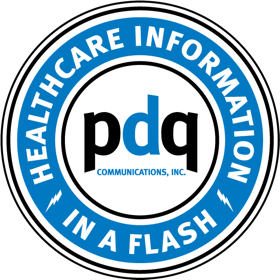The pharmaceutical industry is vast and highly competitive, and effectively marketing pharma...
One of the more interesting trends in the healthcare space of late is the fact the role of the physician associate (PA) is evolving. These days, a PA’s background often includes time spent in technology, public health and business—all of which positions them well for leadership roles in multiple areas of medicine.
All that said, perhaps the time has come for pharma marketers to begin putting PAs on their marketing radar. Along with the aforementioned impressive resumes, there are myriad other factors that make PAs an excellent target audience for your future marketing plans.
PA Power
As the line of communication to physicians continues to get more and more restrictive, PAs are emerging as a proven resource, with many now influencing prescribing behavior as well as swaying patient decisions, a reflection of their shift from primary care to specialty care. As the healthcare space continues the charge into the digital health era, PAs appear to be adapting to these new technologies more seamlessly than physicians, taking advantage of how tech is reducing administrative work, increasing patient face time, and leading to overall more effective clinical care.
The changing role of PAs in healthcare didn’t happen overnight. According to a 2012 study by the New York-based think tank Manhattan Research, titled ‘Taking the Pulse,’ PAs began passing physicians on the digital front years ago. The report found PAs spending more time online per week than physicians (14 hours to 11 hours); using smartphones during patient consultation more (74% PAs to 40% physicians); and visiting pharma or biotech websites more frequently on a weekly basis (30% to 23%).
Fast forward to 2017 for further evidence the role of the PA is changing and gaining in prominence. A report by the research nonprofit Health Care Cost Institute reveals that between 2012 and 2016, visits to nurse practitioners and PAs went up 129%, while office visits to primary care physicians dropped 18%, for patients under 65 years of age with employer-sponsored health insurance.
"Perhaps the time has come for pharma marketers to begin putting PAs on their marketing radar."
Now, About That Title Change
Recently conducted research by consulting/branding firm WPP, on behalf of the trade association American Academy of PAs (AAPA), concluded that “exploration of an alternative professional title for PAs should be pursued.”
The WPP’s findings supporting a title change were largely based on what physician associates are actually responsible for today, which includes diagnosing illness, developing and managing treatment plans, and prescribing medications. All of which essentially leads to the fact a large percentage serve as a patient’s principal healthcare provider today.
Physician Shortage Coming
The aforementioned restrictions on access to the physician community is likely to continue, so a marketing plan that relies too heavily on reaching physicians simply isn’t a long-term strategy for success. Along with rethinking how this audience wants to receive content, through what channels, what formats, and how often, you need to begin considering the physician associate as a viable HCP lead for your marketing messages going forward.
If you’re still unsure about placing PAs higher on your marketing pecking order, consider this: A 2019 study conducted for the AAMC by London-based global information provider IHS Markit, predicts that the United States will face a shortage of between 46,900 and 121,900 physicians by 2032, in both primary and specialty care. Physician associates are now widely viewed as part of the solution.
Whether it’s PAs, physicians, nurses, pharmacists or consumers, PDQ will leverage our proven healthcare network to work for you. Let PDQ optimize your brand and messaging goals—reach out today.








